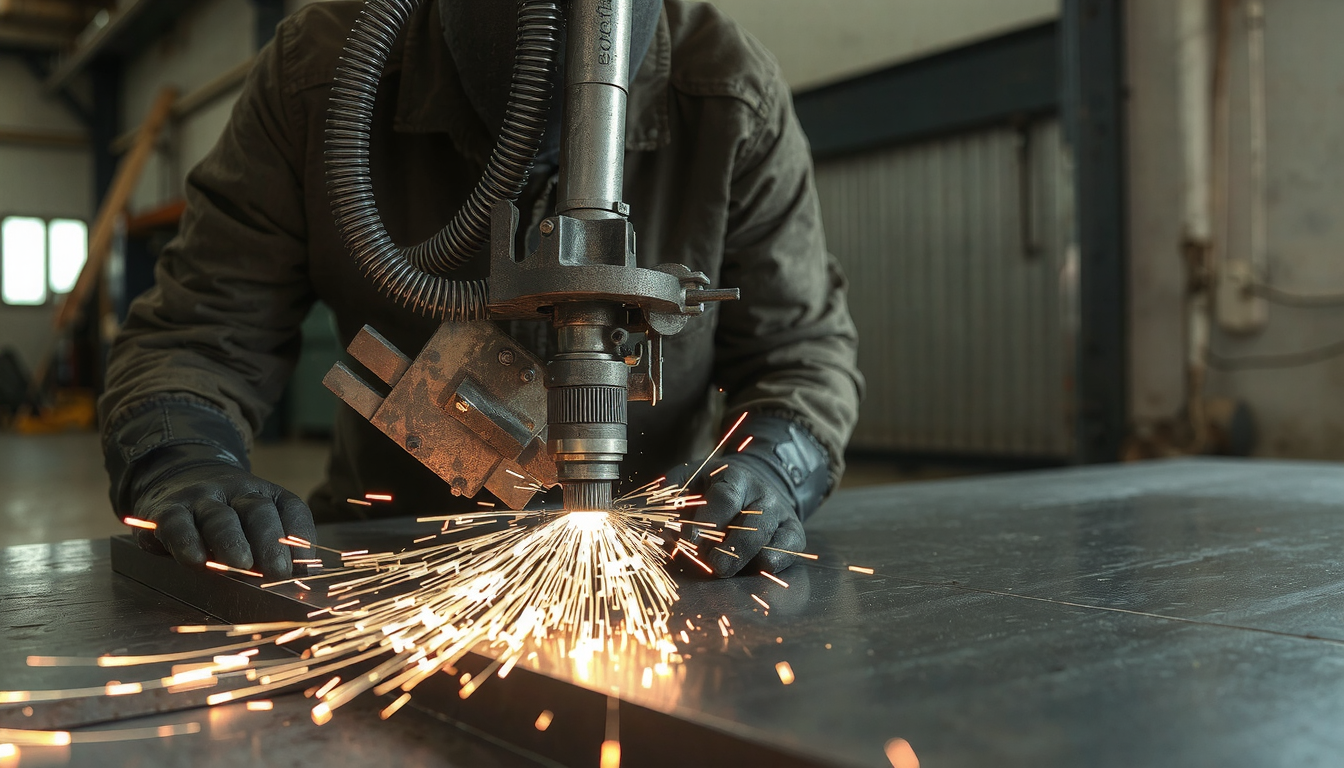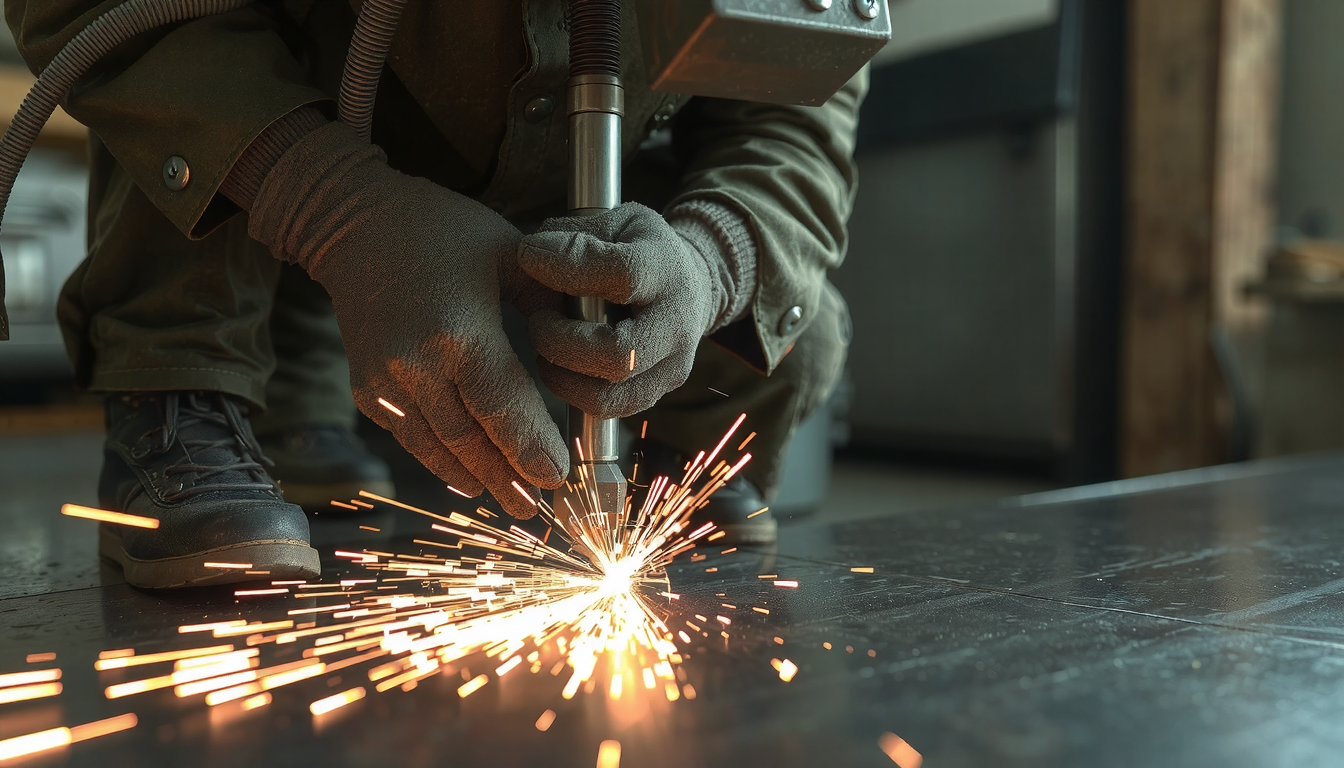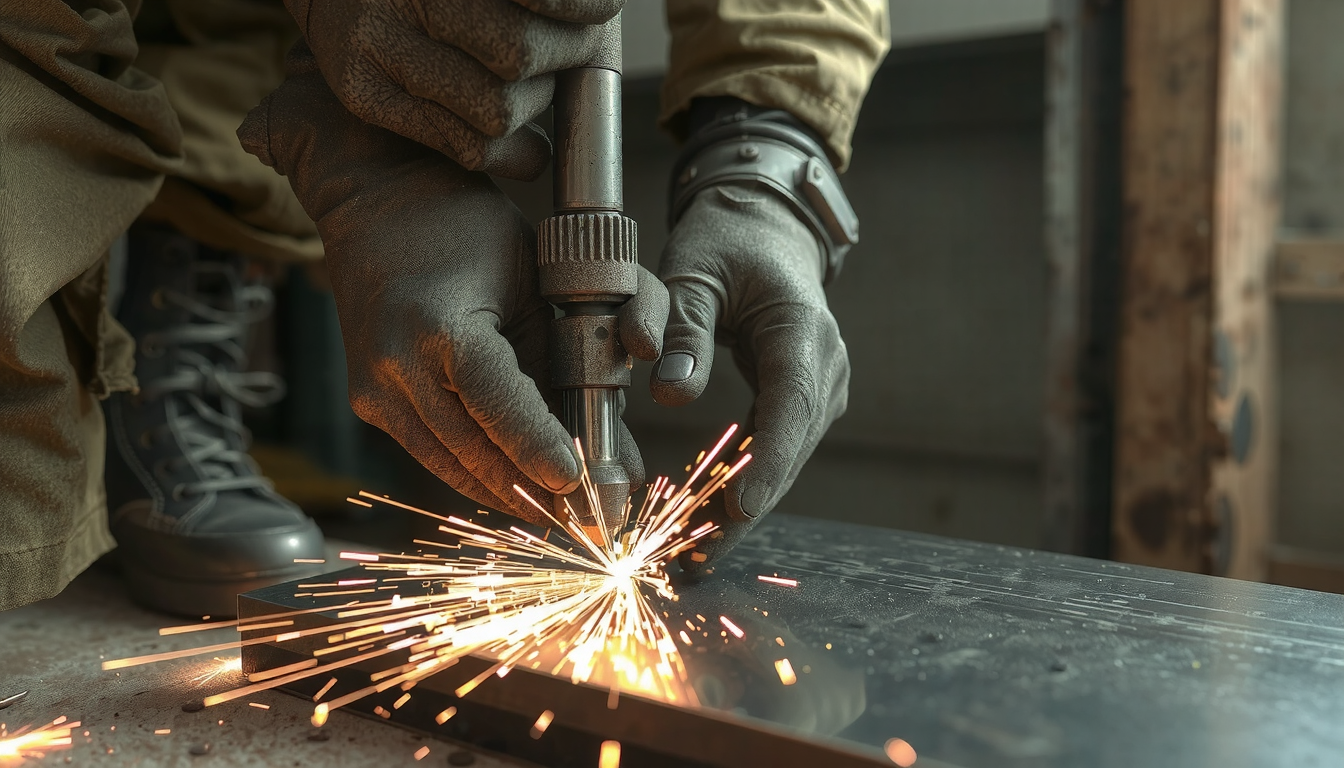Before discussing how to cut sheet steel metal, you need to have project & steel sheet. The bright side is you have multiple selections. The optimal approach solely depends on the special requirements you have. Sometimes, it’s more than one “correct” way to do it.

For thin steel, simple hand snips can be quite effective. In the case of thicker sheets, you may require a powerful angle grinder. The essential thing is to use the correct tool for the right job.
The guide is designed to help you understand the basics of performing steel sheet metal cutting without risks and with great quality. We’ll go through the method and tool choices. You will also find out how to obtain a flawless finish. So let’s dive into the project!
Safety Must Always Come First: Your Checklist Before Each Cut
Cutting metal may mostly be very dangerous if not done properly. You can see sparks, sharp edges, and hearing damage as being part of the process. None of the projects can do without your safety.
The first step is to go over the safety checklist before taking even one cut. If you follow these steps you will not only reduce the chances of getting hurt but also increase your self-assurance while you work.
Essential Personal Protective Equipment (PPE)
- Safety Glasses or Goggles: This is a must-have. Tiny flakes of metal are propelled at very high speeds. Your eyes must be protected at all times.
- Heavy-Duty Gloves: The steel edges can be as sharp as a razor blade. It is recommended to wear leather gloves or gloves that are specially resistant to cuts.
- Hearing Protection: The power tools such as angle grinders are incredibly loud. Use earplugs or earmuffs to protect your hearing.
- Long-Sleeved, Non-Flammable Clothing: Wear thick, natural-fiber clothing like cotton or denim. This protects your skin from hot sparks.
- Dust Mask or Respirator: Cutting metal creates fine dust. Breathing this dust is bad for your lungs. A simple mask is good. A respirator is better.
Organizing Your Workspace
- Secure the Workspace: Your metal sheet should be secured properly. Use heavy-duty clamps to attach it to a workbench or saw horses. A movable workpiece is a huge reason for accidents.
- Clearing the Space: Getting rid of anything that can easily catch fire is important. For instance sawdust, oily rags, paper, and chemicals are all examples of flammable items.
- Ensuring Ventilation: Have an open or well-aired area for work. Doing this allows easy clearing of dust and fume from the cutting process.
- Have a Fire Extinguisher Close: As sparks are created, the risk of fire is always here. It is not a bad idea you have a fire extinguisher handy.

Deciding on the Right Method: A Decision-Making Guide
Opting for a method to cut steel sheet metal can cause confusion at times. Your best-performing instrument is dependent on four main factors. Counting these among the good choices will lead you to the right option.
To start, you need to think of the material’s thickness. This is often referred to as the gauge. The second consideration is the type of cut you require. Do you need a straight, rap, or a complex shape? An essential issue to decide is how clean should the finished edge be. Lastly, budget plays a crucial role, and you should consider what equipment you already have.
Helpful Chart for Subjective Steel Sheet Metal Cutting Tools
The chart provided helps to compare the tools commonly used thus one can tell which tool is best for what period or their good and bad sides.
| Outil | Meilleur pour | Pour | Cons |
|---|---|---|---|
| Aviation Snips | Thin steel (22-gauge or thinner), short straight cuts, gentle curves | Inexpensive, quiet, no sparks, very good control | Hard work on long cuts, can bend edges, not for thick metal |
| Angle Grinder | Thick steel, fast straight cuts, demolition | Very fast, cuts thick material with ease | Very loud, throws a lot of sparks, rough finish, not very precise |
| Circular Saw | Long, straight, clean cuts in various thicknesses | Faster and cleaner than a grinder for straight cuts | Can be scary to use, needs a special metal-cutting blade |
| Jigsaw | Curved and complex shapes in thin to medium-gauge steel | The best tool for cutting shapes and circles | Slow, blades can break, not good for long straight lines |
How to Cut Steel Sheet Metal with Hand Tools
The typical and simplest method for cutting thin steel is the one using hand tools. This technique is fantastic for beginners and small jobs. You can just feel how the metal behaves which is an important thing.
We are going to study the use of aviation snips. This tool is also referred to as tin snips. They look like a pair of scissors made with heavy-duty material. Their color shows the type of cut they make. Red-handled snips cut left curves. Green-handled snips cut right curves. Yellow-handled snips are for straight cuts. If you are looking for other hand tools, check out this guide on Top 10 Ways to Cut Metal – Without an Angle Grinder!.

Instructions for Use of Aviation Snips
- Mark Your Line: Use a permanent marker and a metal ruler or square. A clear line is key to an accurate cut.
- Choose the Right Snips: For a straight line, use yellow snips. For a curve, choose red or green snips. This choice helps the waste piece curl away from your hand and out of the way.
- Start the Cut: Begin at the edge of the sheet. Open the jaws of the snips as wide as they will go.
- Make Smooth, Long Cuts: Squeeze the handles to cut along your line. Use about two-thirds of the blade’s length for each cut. A common mistake is to snap the blades completely shut. This creates a small, ugly “dimple” at the end of each snip. Stop just before the blades fully close to get a smoother edge.
- Manage the Waste Piece: As you cut, the waste side of the metal will curl. Gently bend this piece up or down to keep your cutting path clear.
How to Cut Steel Sheet Metal with Power Tools
In situations that demand larger jobs, thicker metal, or faster work, power tools are the answer. They can save a lot of time and labor if you invest in them. On the contrary, they indeed require more safety precautions and practice. There are many options available which are displayed in this overview of The Best Metal Cutting Tools.
The three most common power tools for cutting steel sheet metal are the angle grinder, circular saw, and jigsaw.
Using an Angle Grinder
The angle grinder is a potent and versatile tool. It is the best choice for making fast and rough cuts in steel of almost any thickness.
Steps:
1. Attach a thin metal cut-off wheel to the grinder. Make sure it is rated for cutting steel.
2. Clamp the steel sheet firmly to your work surface. Let the part you are cutting off hang over the edge.
3. Hold the grinder with both hands. Turn it on and let the wheel get to its full speed before it touches the metal.
4. Gently lower the spinning wheel onto your marked line. Let the tool do the work. Do not push down hard. Just guide it steadily along the line. From experience, we know the shower of sparks is intense. The noise is deafening. A firm, two-handed grip is essential to control the tool and prevent it from kicking back at you.
Using a Circular Saw

The circular phenomenon can also be used to make very clean cuts through the metal sheet. It is frequently quicker and more accurate than using a grinder for long cuts.
Steps:
1. An exclusive metal-cutting blade installation is required.
2. You need to get the lowest depth over the blade. It should only be a bit deeper than the thickness of the metal sheet.
3. For a straight cut without wavering, clamp a straight piece of metal or wood to your sheet. This works as a guide for the saw.
4. Start the saw away from the metal. Move into the cut at a slow and steady speed.
Using a Jigsaw for Curves
When you need to cut curves, circles, or other complex shapes, a jigsaw is the perfect tool. No other tool offers this much control for detailed work.
Steps:
1. Install a blade made for cutting metal. These have very fine teeth.
2. If you are starting a cut in the middle of the sheet, you must first drill a “pilot” hole. This hole should be large enough to fit the jigsaw blade.
3. Set your jigsaw to a slow speed. If it has an “orbital action” setting, turn it off. This will give you a cleaner, more precise cut.
4. Applying a little cutting oil along your line can help. It reduces heat and makes the cut smoother. It also helps the blade last longer. Following your line carefully is the key to successfully cutting shapes in steel sheet.
Rough to Fine: Deburring
After cutting steel sheet metal, the edge will be sharp and rough. This rough edge is called a “burr.” Removing it is a critical step for safety and a professional finish.
Deburring is important for a few reasons. First, a burr is a very sharp edge which may result in injuries. Next, a smooth edge is a requirement for the piece to fit other parts. Discrepancies between pieces can occur and cause damage to the paints and other coats.
Tools for a Clean Edge
- Mill File: A simple flat file is the most common tool for this job.
- Deburring Tool: This is a special hand tool with a swivel blade that shaves off the burr quickly.

